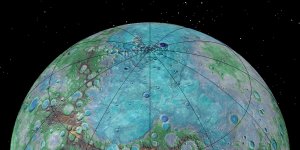| News / Science News |
Nanogenerator Creates Electricity from Snowfall
The team of researchers from the University of California, Los Angeles reveal that their snow-based triboelectric nanogenerator — snow TENG as they refer to it — uses static electricity to generate charge.

Nanogenerator creates electricity from snowfall. Photo: Craig Whitehead/Unsplash
"Static electricity occurs from the interaction of one material that captures electrons and another that gives up electrons," Richard Kaner, senior author and professor. "You separate the charges and create electricity out of essentially nothing."
Snow is positively charged, while silicon is negatively charged. Thus, when the snow comes into contact with the silicon surface, the contact produces a charge that the device catches. The result: electricity.
It took some time for the researchers to settle on silicon as their material of choice, as there are other materials that could potentially work.
"While snow likes to give up electrons, the performance of the device depends on the efficiency of the other material at extracting these electrons," Maher El-Kady, co-author and assistant researcher at UCLA, says. He added that the team tested other materials such as aluminum foils and Teflon, but after all the tests, they found that silicon was able to produce more charge than the other materials.
Wintertime covers roughly 30 percent of the Earth in a blanket of snow, which means solar panels usually do not operate smoothly in these regions during this season. The new device from UCLA can be integrated into solar panels to provide an alternative power source during snowy days when not enough sunlight makes it to the solar array.
While the most impressive feature of the device is creating electricity, it also acts as a handy weather station that can tell users data on the amount and direction of snowfall as well as the direction and speed of the wind.
Athletes can also use the device to assess and monitor their performance in various winter sports. The snow TENG has the potential to recognize movement patterns when cross-country skiing, which is a feature not yet available in fitness wearables and smart watches. (Tasnim News Agency)
YOU MAY ALSO LIKE





